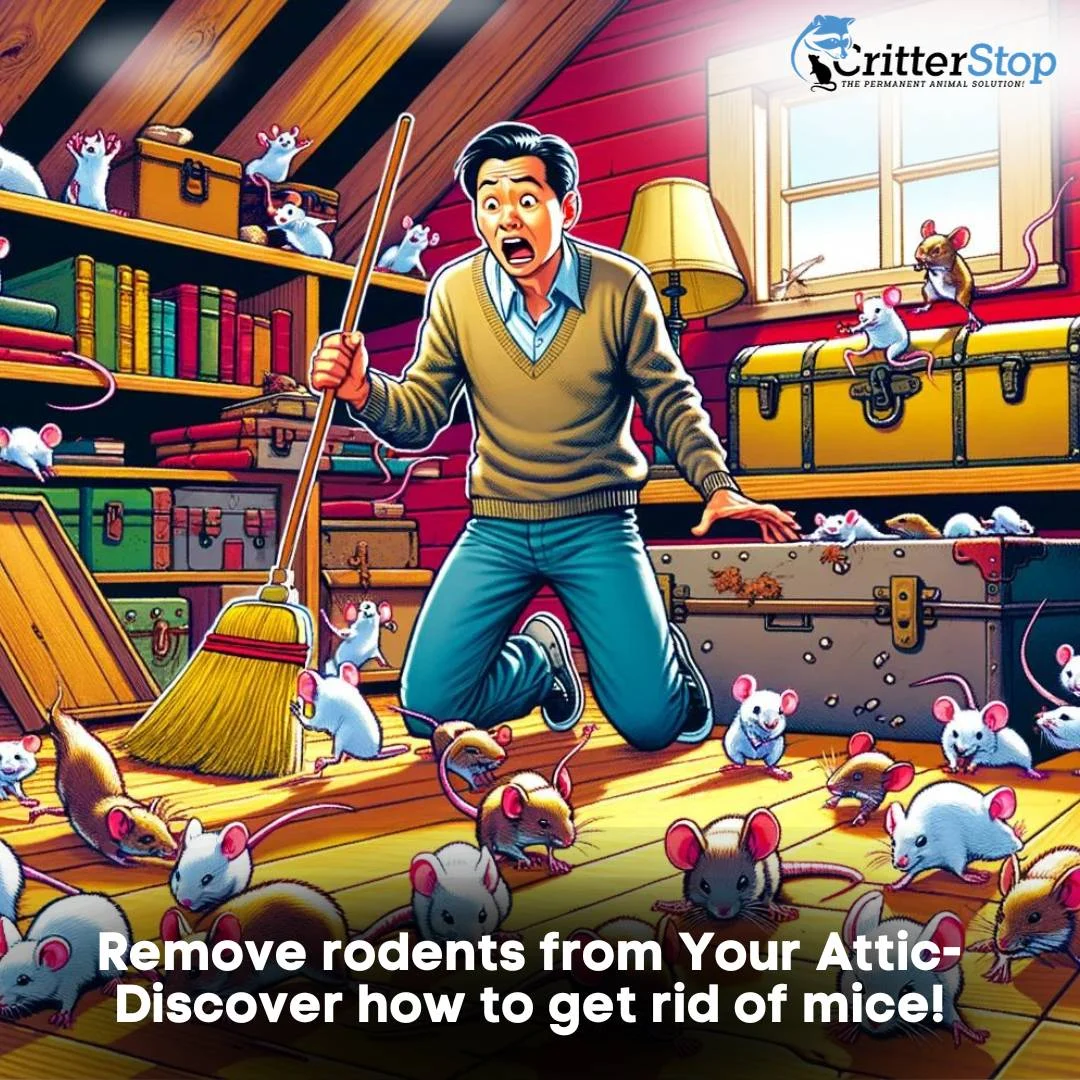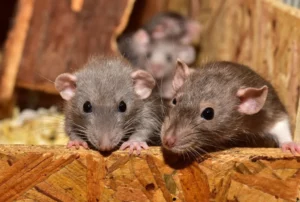
Having mice in your attic can be a frustrating and potentially dangerous situation. These pesky rodents can cause damage to your home and spread diseases. If you're dealing with a mouse infestation, it's important to take immediate action to eliminate them from your attic. In this article, we will discuss some effective methods to remove mice from your attic, along with expert tips to keep them out for good.

Mice are cunning creatures that can find their way into your attic through various entry points. To effectively get rid of them, it's crucial to understand how they sneak in. Here are some hidden entry points that mice commonly use:
Identifying and sealing these entry points is the first step towards preventing mice from entering your attic.
One effective method to locate the hidden entry points for mice is to conduct a thorough inspection of your attic. Look for any signs of gnaw marks, droppings, or nesting materials. Pay close attention to areas around wires, pipes, and vents. Seal any gaps or cracks you find with steel wool, caulk, or expanding foam.
During your inspection, it's important to note that mice are resourceful and can squeeze through incredibly small openings. They have flexible skeletons that allow them to fit through holes as small as a dime. This means that even the tiniest gaps or cracks can serve as entry points for these determined rodents.
Furthermore, mice are skilled climbers and can easily scale walls and other vertical surfaces. They can use their sharp claws to grip onto various materials, including wood, brick, and even metal. This enables them to access higher areas of your home, such as the attic.
Another common entry point for mice is through unprotected vents and openings. Mice can easily squeeze through the small gaps in mesh screens or damaged vent covers. It's important to regularly inspect and maintain these openings to ensure they are secure and intact.

Mice are agile climbers and can easily navigate their way through your home to reach the attic. Common pathways they use include:
Trimming back trees and vegetation, as well as securing wires and pipes, can help prevent mice from using these pathways to invade your attic.
When it comes to pipes and wires, mice can use them as highways to travel throughout your home. They can easily navigate along these narrow pathways, making their way from the ground floor all the way up to the attic. It's important to inspect these areas regularly and seal any gaps or openings around pipes and wires.
Tree branches close to the roof can also provide mice with an easy route into your attic. These agile rodents can jump from branches onto your roof, then find their way inside through any vulnerable points. Trimming back tree branches that are close to your home can help eliminate this access point.
In addition, vines or ivy that grow on the exterior walls of your house can provide mice with a convenient ladder to reach the attic. These plants can act as a bridge, allowing mice to climb up and enter your home through any openings they find. Regularly trimming and maintaining these plants can help prevent mice from using them as a pathway.
Lastly, overhanging gutters can also be a potential entry point for mice. If the gutters are not properly secured or have gaps, mice can climb up and enter your attic through these openings. Regularly cleaning and maintaining your gutters, as well as ensuring they are securely attached to your home, can help prevent mice from using them as a pathway.
By understanding the hidden entry points and common pathways that mice use to invade your attic, you can take proactive measures to prevent their entry. Regular inspections, sealing gaps and cracks, and maintaining the exterior of your home can go a long way in keeping these unwanted guests out of your attic.
Having mice in your attic poses several risks to your home and health. It's important to be aware of the dangers associated with a mouse infestation:
Mice are carriers of various diseases, including hantavirus, salmonellosis, and leptospirosis. These diseases can be transmitted to humans through contact with mouse droppings, urine, or saliva. Hantavirus, for example, can cause a severe respiratory illness that can be life-threatening. Salmonellosis, on the other hand, can lead to symptoms such as diarrhea, fever, and abdominal cramps.
In addition to the health risks, mice can also contaminate your food, utensils, and surfaces with their droppings and urine. This can lead to food poisoning and other gastrointestinal illnesses. The presence of mice in your home can compromise the overall cleanliness and hygiene of your living environment.
Furthermore, mice are notorious for their constant gnawing behavior. They have a strong instinct to chew on various materials to keep their teeth from growing too long. This can result in significant damage to your attic. Mice can chew through electrical wiring, insulation, and even structural components of your home. This poses not only a risk of electrical malfunctions and fire hazards but also compromises the integrity of your attic's structure.
A mouse infestation can result in severe damages to your attic and home, including:
The longer you ignore a mouse infestation, the more extensive the damages can become. Mice reproduce rapidly, and a small infestation can quickly turn into a larger problem. That's why it's crucial to act promptly at the first signs of a mouse infestation. Seek professional help to safely and effectively eliminate the mice from your attic and prevent further damage to your home.
Now that you understand the risks, it's time to take action and eliminate mice from your attic. Here are some tried and tested methods to get rid of these pests:
1. Set up snap traps baited with peanut butter or cheese. Place them near entry points or along mouse pathways. Mice are attracted to the smell of food, so using baited traps is an effective way to catch them. Snap traps are designed to kill mice instantly, ensuring a quick and humane method of eradication.

2. Use humane catch-and-release traps to capture mice alive. Release them far away from your home to prevent their return. This method allows you to remove mice without causing harm to them. However, it's important to release them at a sufficient distance from your home, as mice have a strong homing instinct and can find their way back if released nearby.
3. Utilize ultrasonic pest repellers that emit high-frequency sounds to drive away mice. These devices are designed to be safe for humans and pets while effectively deterring mice. The high-frequency sounds are unpleasant to mice, causing them to seek shelter elsewhere. Place the repellers strategically in your attic to maximize their effectiveness.
4. Consider using rodenticides as a last resort, but exercise caution and follow safety instructions. Rodenticides are chemical substances that are toxic to mice. They come in various forms, such as pellets or blocks, and are typically placed in bait stations to prevent accidental ingestion by non-target animals. It's important to use rodenticides responsibly and keep them out of reach of children and pets.
Always monitor and reset traps regularly until you no longer detect any mouse activity in your attic. It may take some time to completely eliminate the infestation, so patience and persistence are key.
In addition to traditional methods, there are some DIY solutions you can try to deter mice from your attic:
Remember that prevention is key to keeping mice out of your attic. Regularly inspect and maintain your home to minimize the risk of future infestations. Seal any cracks or openings in your attic walls or roof, as mice can squeeze through even the tiniest gaps. Additionally, ensure that your attic is well-ventilated and free of excess moisture, as mice are attracted to damp environments.
In conclusion, if you're dealing with a mouse infestation in your attic, it's important to take immediate action to eliminate them. By understanding how mice sneak in, the dangers they pose, and implementing effective removal methods, you can successfully rid your attic of these unwanted guests. Follow the expert tips provided in this article, and you'll be well on your way to a mouse-free attic.